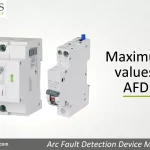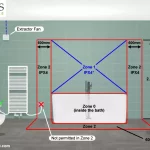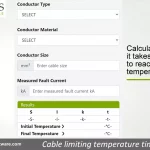AFDD’s – Arc Fault Detection Devices
There seems to be mixed opinions with the introduction of Arc Fault Detection Devices commonly known as AFDD’s introduced into the 18th edition UK wiring regulations.
Many articles state that AFDD’s are ineffective on ring main circuits, which in a domestic property could mean that an AFDD would only apply to shower circuits, cooker circuits and lighting circuits, basically all radial final circuits only, therefore could AFDD’s mean the end of ring final circuits on new installations which to be honest can only be a good thing right?
We are all aware of the problems with ring circuits, some being altered by the DIY expert so now the ring main circuit is no longer a ring circuit, now it’s two radial circuits on a 32 amp MCB with multiple spurs from spurs from spurs, but that’s a whole blog post on it’s own for another day.
AFDD’s and Nuisance Tripping
As we know with RCD’s and RCBO’s the term “Nuisance Tripping” or “Unwanted Tripping” is fairly common. Possible causes of nuisance tripping could be an ageing fridge freezer for example. Will we have the same issue with Arc Fault Detection Devices?
A final circuit protected by an RCD and an AFDD could cause a lot more nuisance and unwanted tripping. Of course if an RCD, RCBO or AFDD trips then it’s doing it’s job as intended but for the end user it could just be an annoyance to them but at the end of the day safety has to come first.
Three Phase AFDD Arc Fault Detection Device
From our online research we were unable to find any Three Phase AFDD’s, therefore do AFDD’s only apply to single phase circuits, or perhaps the manufactures haven’t produced a three phase AFDD yet? Once the manufactures produce a three phase Arc Fault Detection Device could we see an amendment to BS 7671 being released?
What is an AFDD?
An Arc Fault Detection Device does what it says on the tin, it detects (or tries to detect) an arc fault on a circuit, if an arc fault is detected by the AFD Device then it will trip. The idea is to offer additional protection against the risk of fires caused by arcing connections for example.
Are AFDD’s Compulsory?
From what we can gather it seams currently AFDD’s are recommended but not a compulsory (subject to change). When RCD’s where first introduced it started with only being required for sockets which could supply equipment outside, then all sockets, then all cables buried less than 50mm in the wall without suitable earthed mechanical protection, now basically almost everything is RCD protected. We can see the requirements of AFDD’s going the same way as RCD’s over the coming years.
BS 7671 Amendment 2 AFDD Requirements
** UPDATE March 2022: ** Continue reading to the end of this post for details on the changes implemented by Amendment 2 of BS 7671 in relation to AFDD requirements.
AFDD Testing Demo Video
AFDD Video by Eaton.





